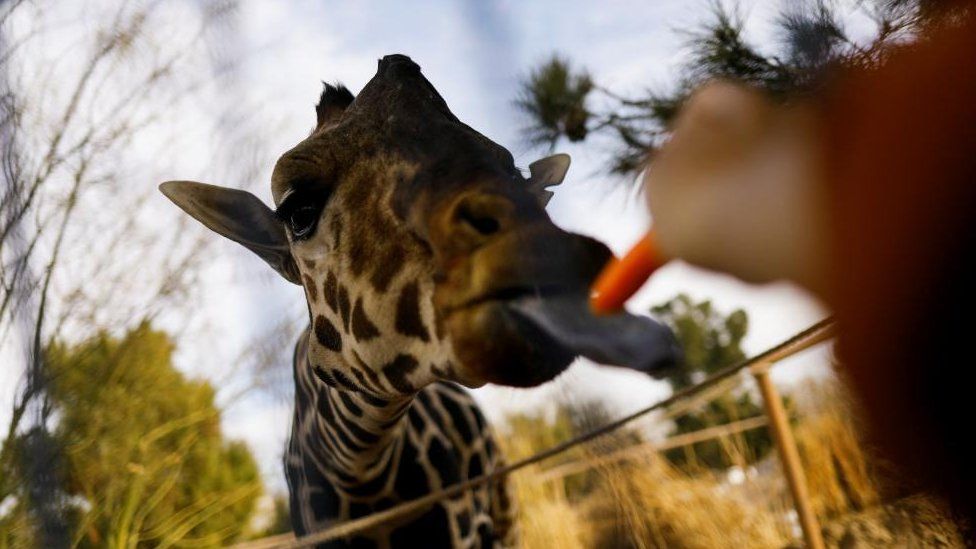-

-
-
Loading

Loading

Benito, a giraffe from the arid north of Mexico, is embarking on a 2,000km journey to find a more suitable climate in the southern regions of the country. The decision to move Benito comes after activists raised concerns about his well-being in the extreme temperatures of Ciudad Juárez, a border city. A specially designed 5m-tall container has been prepared for Benito's transportation. As he began his trip, some activists expressed their support, shouting "we love you." The three-year-old giraffe had been residing in Ciudad Juárez's Parque Central zoo, which activists argued was ill-equipped to care for giraffes in the city's harsh desert climate. Unfortunately, another giraffe named Modesto had previously died in the zoo in 2022. The operation to relocate Benito started on Tuesday morning when the container was loaded onto a truck. Prior to the journey, Benito was given time to familiarize himself with the container. The container is specifically designed to allow Benito to look outside but can also be covered with a tarp to shield him from external elements and potentially distressing sights and sounds. The trip to Benito's new home, a safari park in the state of Puebla, is estimated to take about 50 hours. Frank Carlos Camacho, the director of the safari park, stated that the container is equipped with cameras and sensors to monitor Benito's well-being, and it contains ample supplies of alfalfa, fruits, vegetables, and water to ensure he is nourished throughout the journey. Camacho added, "We can check his temperature, and even talk to him through a microphone that's inside the container. He's very well." Once settled in Puebla's African Safari park, Benito will be viewable by visitors in a more natural habitat from all-terrain vehicles. Perla Iris Guzmán, an activist from the "Let's Save Benito" group, expressed gratitude to those who supported the movement. She thanked the Juárez community for their belief in the cause and their willingness to visit the zoo to witness the conditions faced by the "smaller" animals.